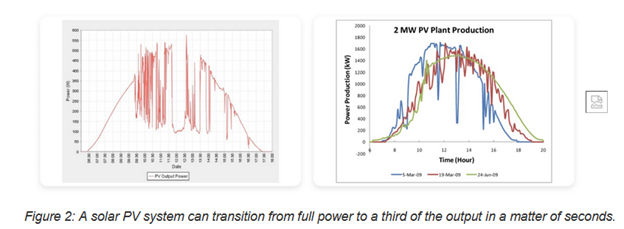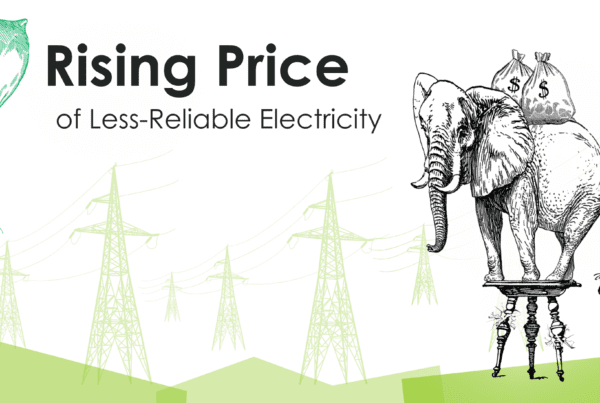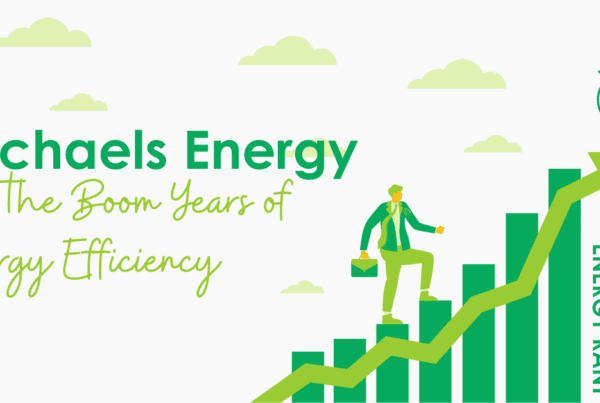
Last week I read a statement from a retail energy provider. It said, “100% green rates, always.” It doesn’t work that way. An aggregation of power sources, including renewable, nuclear, coal, and natural gas, are supplying the grid at any given time. The little electrons aren’t tagged by source and routed to any given customer(s). Second, even if that were impossible, er, I mean, possible, it’s shoving more hydrocarbon electricity onto someone else. In this way, it’s the same as the net zero con.
Cheap but Unreliable
Generating renewable power is easy and inexpensive, but as described in the net-zero con, renewable-rich regions of the country are already over-generating and forced to sell power at negative prices – and that forces more dispatchable baseload thermal power plants out of business. It’s an unstable situation. Furthermore, per NERC, batteries “aren’t going to do it,” meaning provide enough storage for renewable generation.
Piling on more challenge is the fact that wind and solar do not just vary day to day and hour to hour; their output swings wildly in a matter of seconds per North American Clean Energy. Wind generation “output often varies more than 40 percent from one minute to the next.” “A solar photovoltaic (PV) system can transition from full power to 30 percent output in a matter of seconds[1].” We can see why there is one terawatt (one thousand nuclear power plants) worth of renewable backlog on dockets for approval. Grid operators in charge of reliable power want no more of those little tigers.
 Trends in decarbonization include randomly spikey supply with spikey, high-demand loads. It is a recipe for unreliable power and frequent emergency scenarios. It is the opposite of yin-yang.
Trends in decarbonization include randomly spikey supply with spikey, high-demand loads. It is a recipe for unreliable power and frequent emergency scenarios. It is the opposite of yin-yang.
With the lack of reasonably priced bulk electricity storage, decarbonization is far and away a demand-side challenge rather than a supply-side challenge. Like the wisdom to minimize energy loads with efficiency before installing solar, today we must reward load management before adding to the problem by installing more solar panels.
Compounded by Electrification
Moves to electrify everything will compound the problem. The Institute for Energy Research blamed the Christmas outages along the east coast on “forced electrification.” Utility Dive quotes a director at the Advanced Energy Economy regarding New England “how we’re going to get through this upcoming winter?” In a nutshell, electrification makes unmanaged loads spikier.
Renewable Supply and Battery-Wasted Energy
Batteries and large doses of renewable energy have a common problem: they waste energy. To prevent damage and ensure reliability, batteries must be coddled in a controlled environment, requiring a lot of wasted energy even to do nothing. Furthermore, their average round-trip efficiency is only about 80 to 90 percent.
Renewable sources need a constant backup – batteries (see above) or spinning reserves. A spinning reserve is hot and ready to apply power on short notice. The losses are not unlike a truck or car idling on standby. To minimize these wastes, flip to the demand side to reduce the required capacity and, therefore, required standby waste associated with batteries and spinning reserves.
The Decarb Warriors
The real decarbonization warriors will be the energy users who can take power when it is generated in excess and/or curtail consumption during shortages. They should be rewarded handsomely – more than wind and solar producers – because they provide solutions rather than pile onto the problem.
The foundation for decarb warriors to monetize load management is electric rates and tariffs that better match wholesale market prices or at least “dynamic pricing.” You can tell the utility industry is behind (surprise!) rolling out dynamic pricing when Google’s autofill populates 20 guesses, none of which are for utilities but include Taylor Swift, i.e., “dynamic pricing Taylor Swift.”
Thermal Energy Storage
Thermal energy storage, or TES, should be coming to every heating and cooling load in buildings, including refrigeration, space heating and cooling, and large and small appliances. These solutions can shift load daily as a powerful tool to avoid most rolling blackouts. They can also be used to soak up renewable energy and release that energy after the sun sets.
Unlike the losses associated with batteries and spinning reserves, many TES applications reduce total energy consumption because they charge when conditions, including outdoor air temperature, are conducive to higher efficiency. Also, charging equipment doesn’t have to follow the load. It can operate at prime efficiency, in some cases at full load and others maybe 70% load. It depends on equipment characteristics.
Phase Change Materials
Thermal energy storage includes sensible (temperature) and phase change (freeze/thaw) options. Phase change materials, or PCMs, offer greater capacity to store energy than sensible storage. For example, water heaters in cold climates can store about 600 Btu per gallon, assuming a temperature rise from 50°F tap water to 120°F stored hot water. A PCM would double that capacity. A different application with a lower temperature change, like chilled water, may give PCMs a sixfold advantage in storage, pound for pound.
Like efficiency programs, there will be many opportunities for large customized solutions, smaller customized approaches that can be duplicated for many mid-size applications, and consumer items like refrigerators and electric vehicles.
Close
So why is the uptake slow? I’ll make a couple of guesses. First, capital is drawn to develop sexy alternatives like batteries and is not often drawn to intellectual property and know-how. Phase what? Again, it’s like solar panels v efficiency. A second reason is that while you can put an electric meter on a PCM module, it will not tell you anything, like efficiency. It doesn’t meter avoided cost.[2] That is why utilities must set the rates and let the best warrior win.
[1] In places other than the Southwest. Solar is set to explode in places other than the Southwest.
[2] Avoided cost can be determined indirectly with submetering and engineering analysis.




